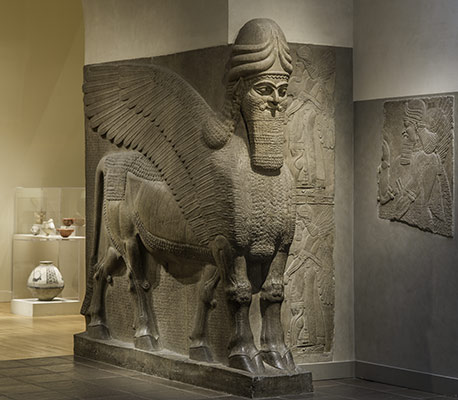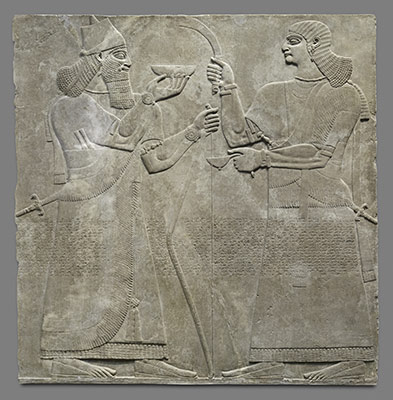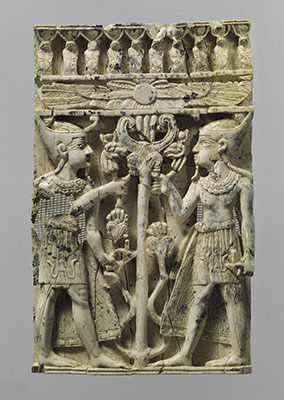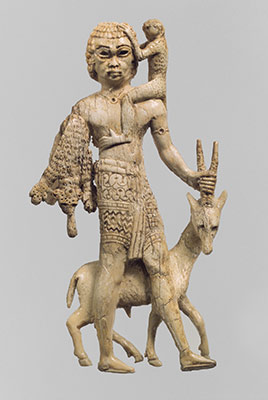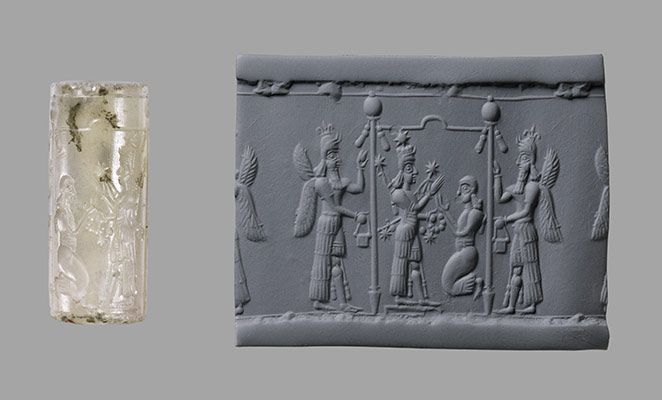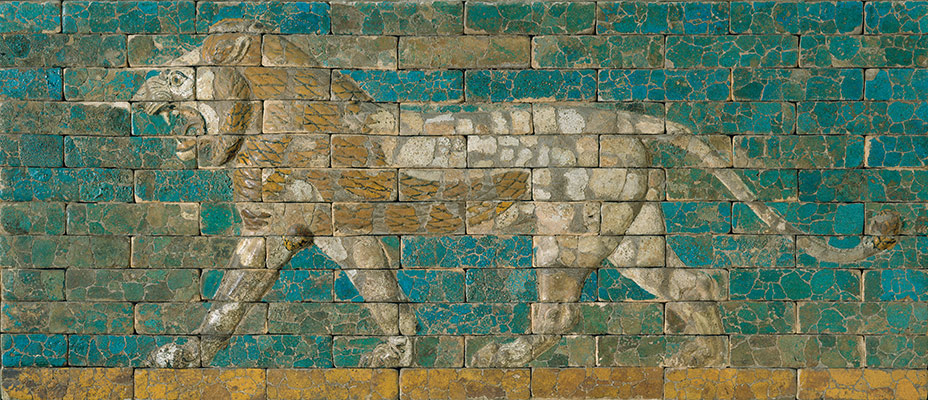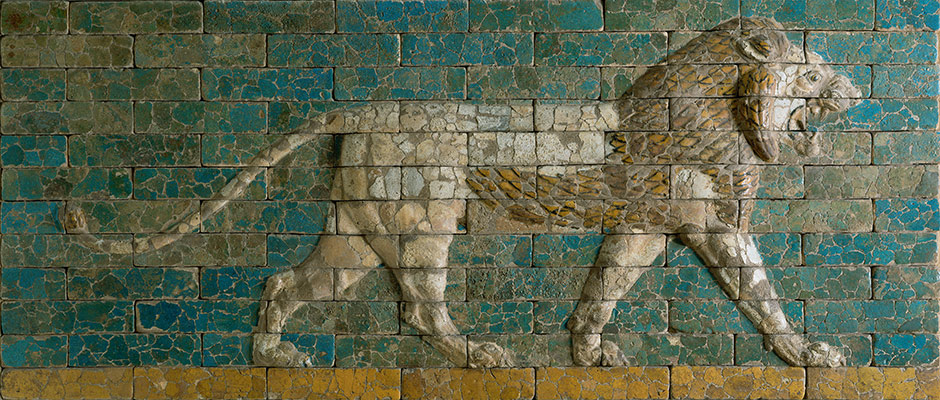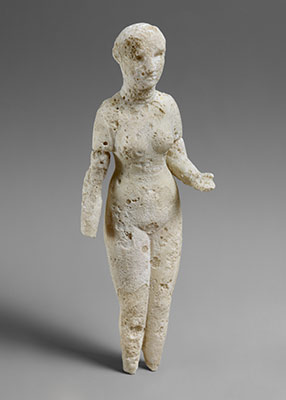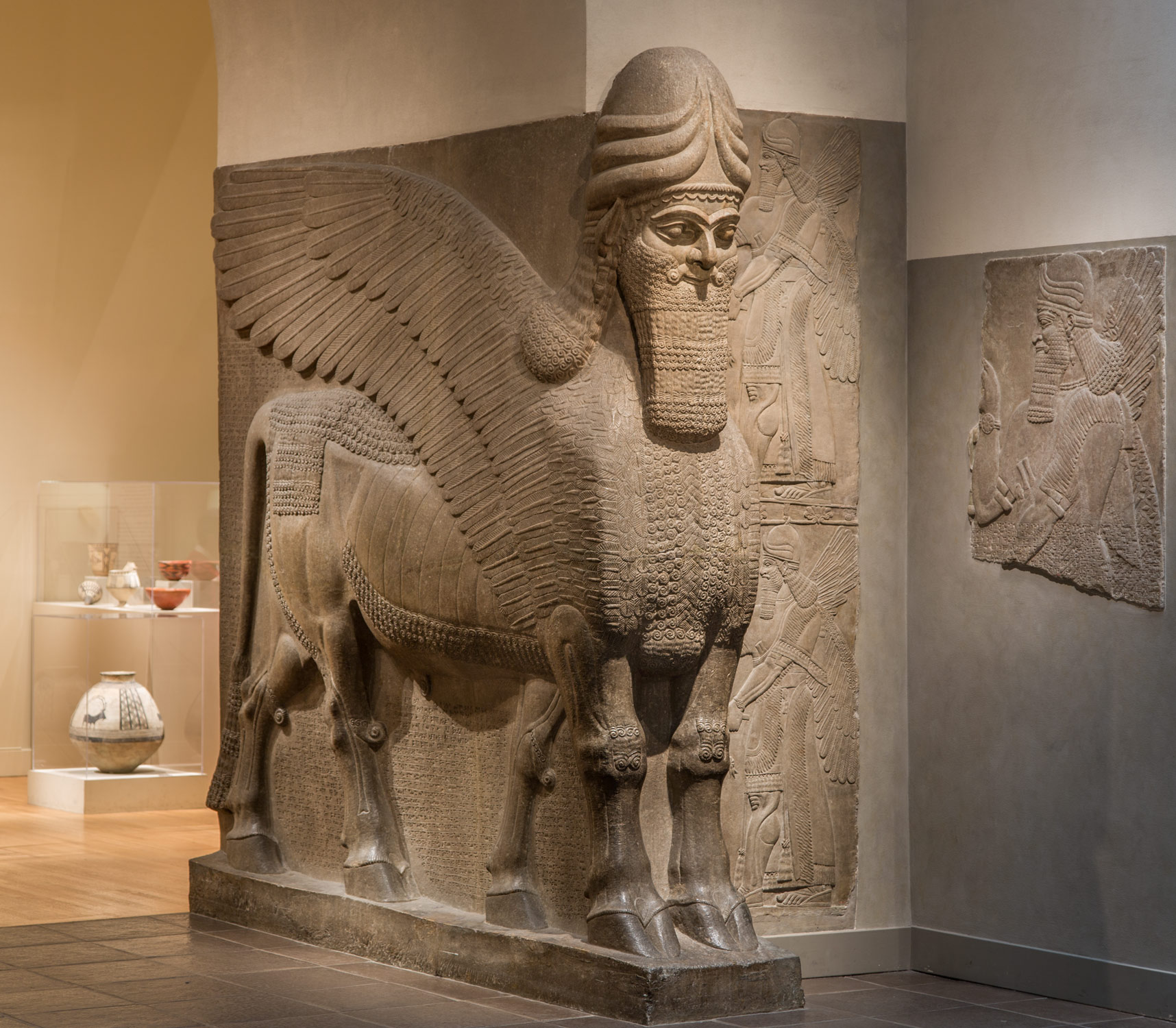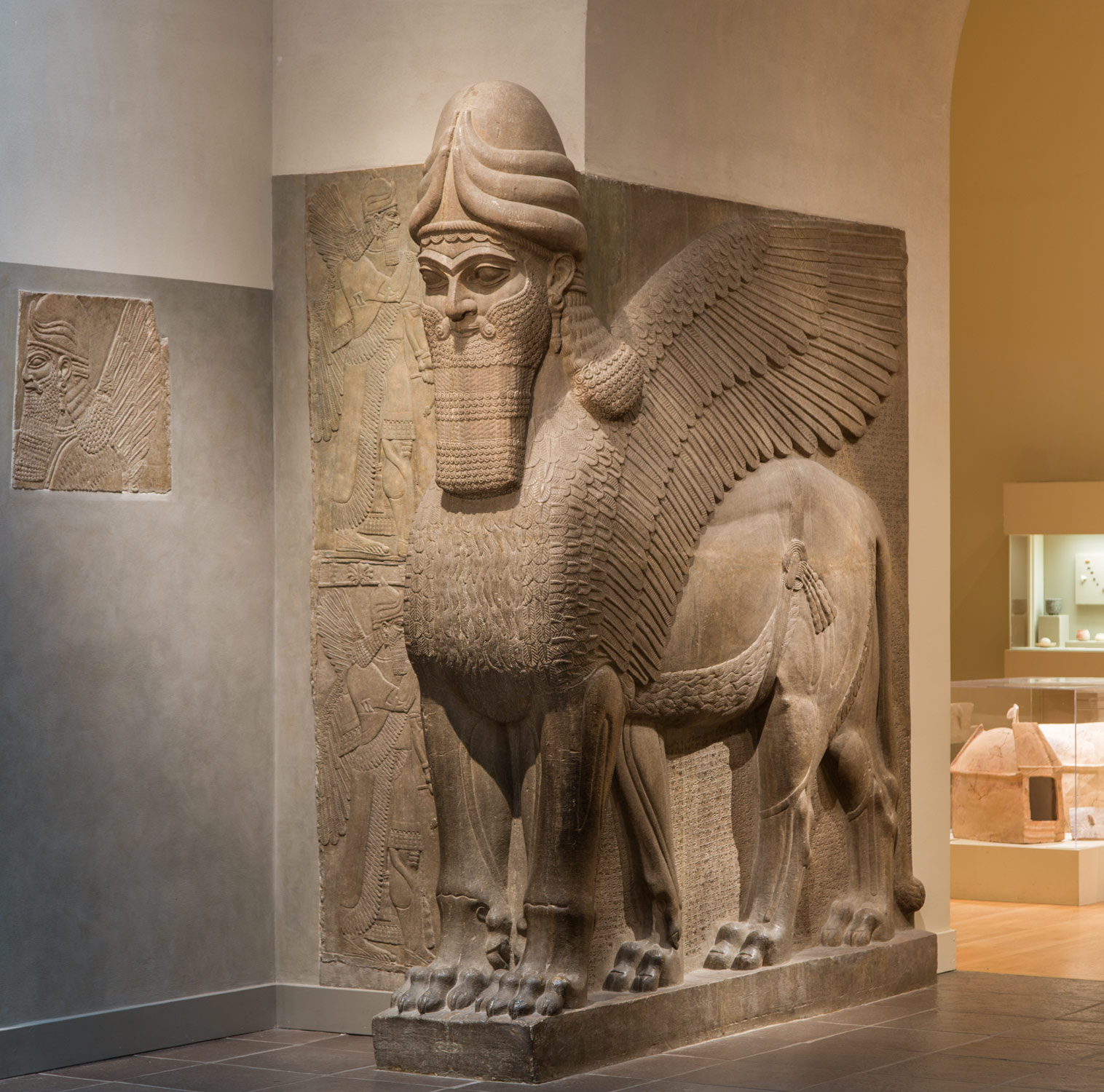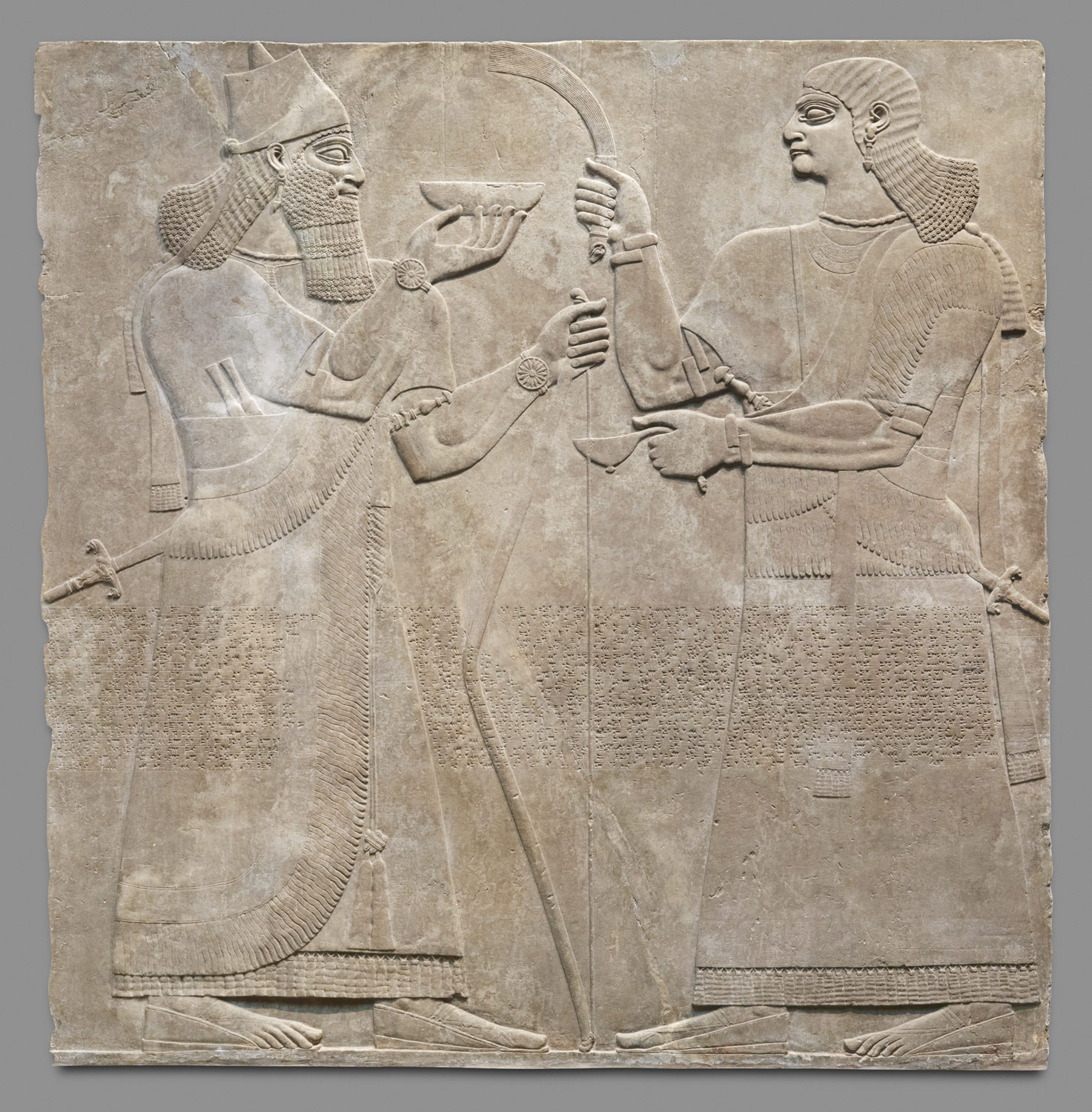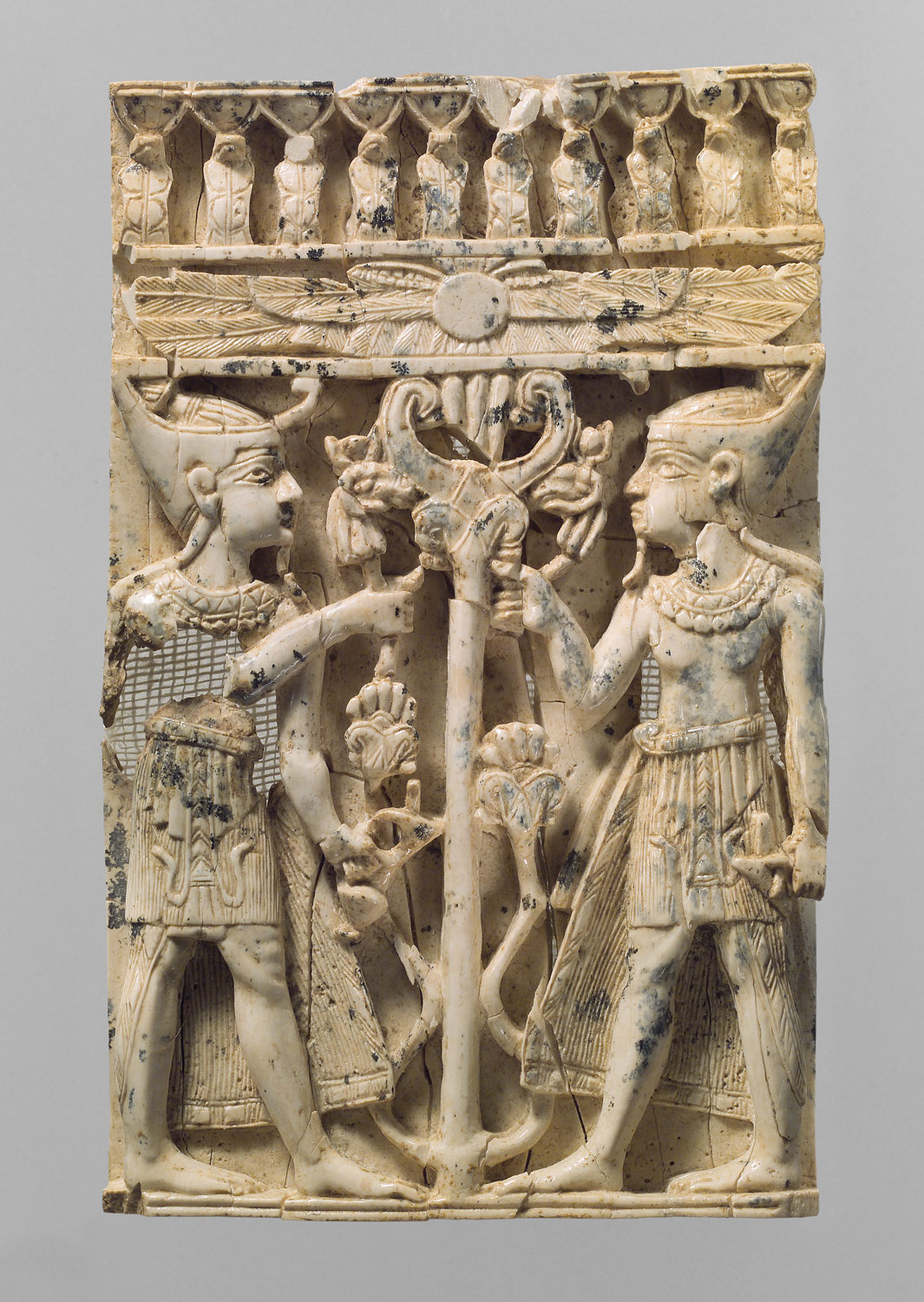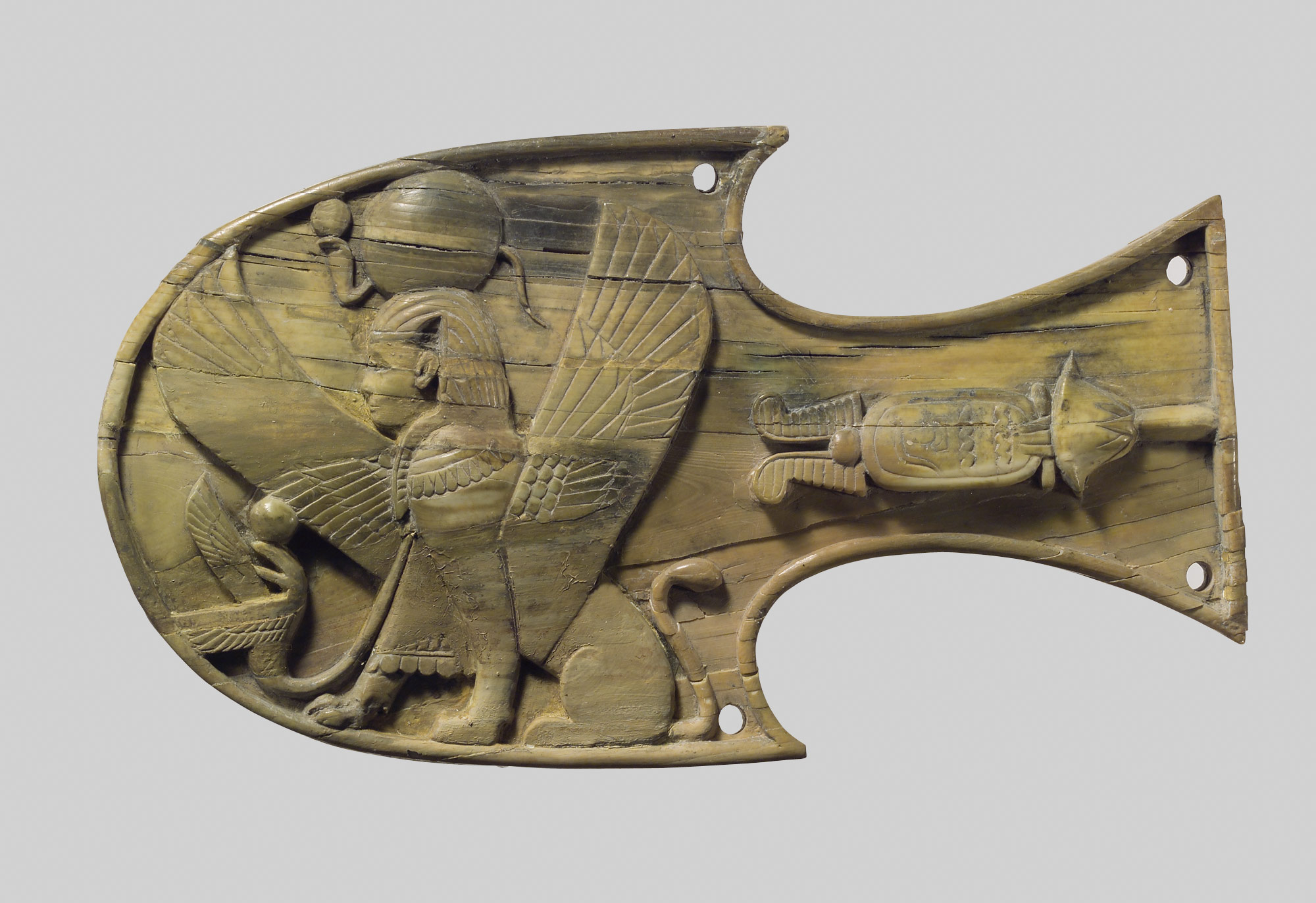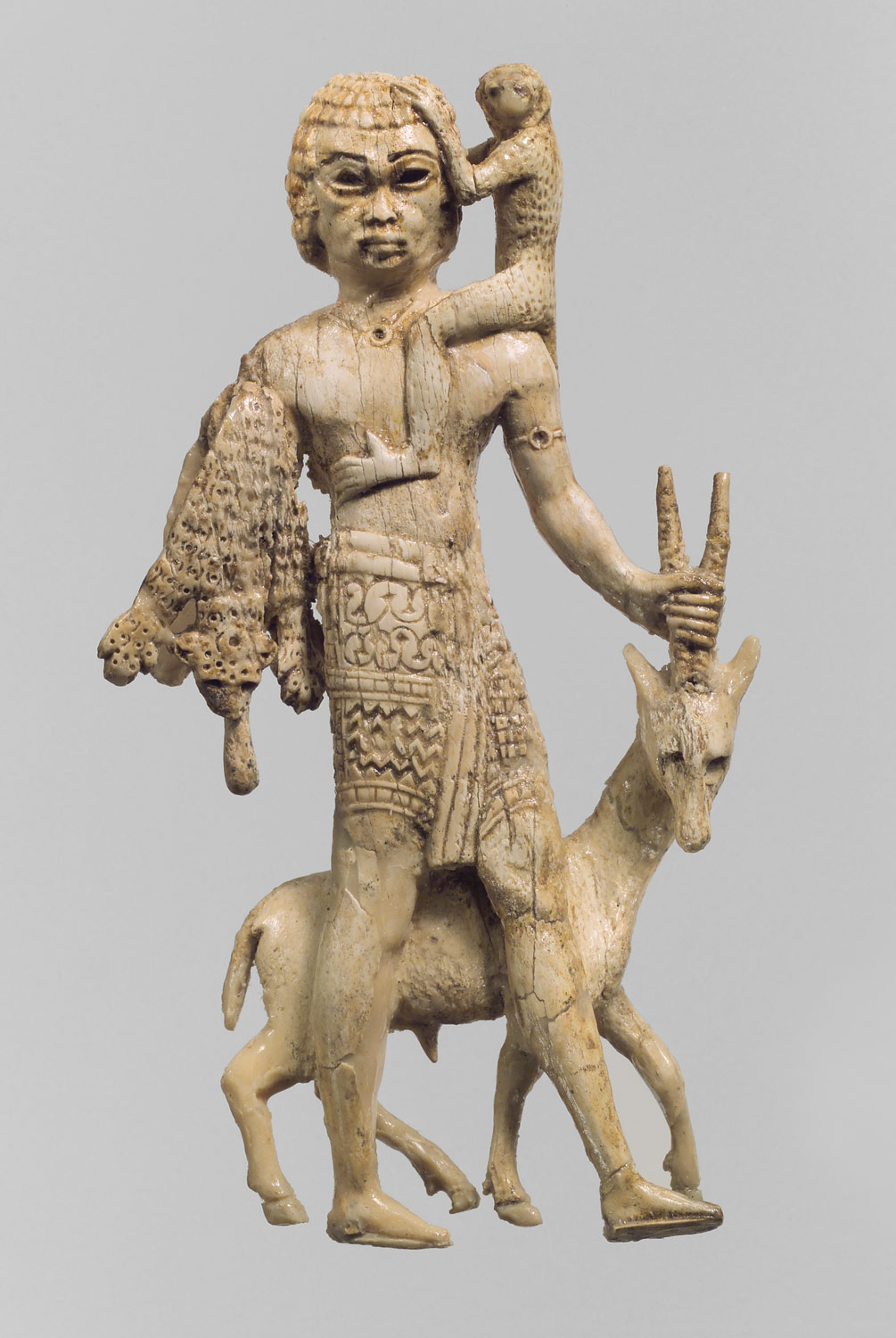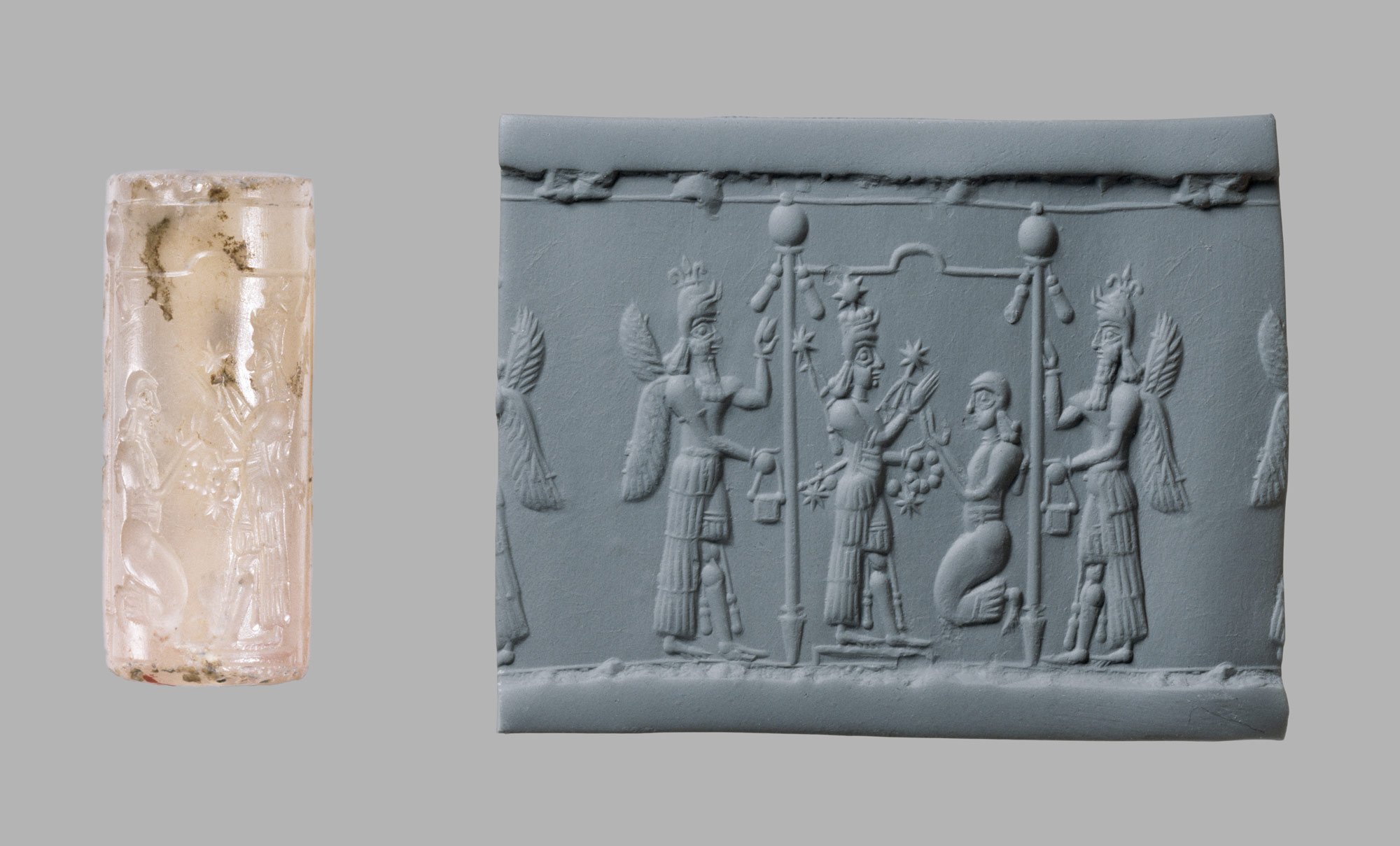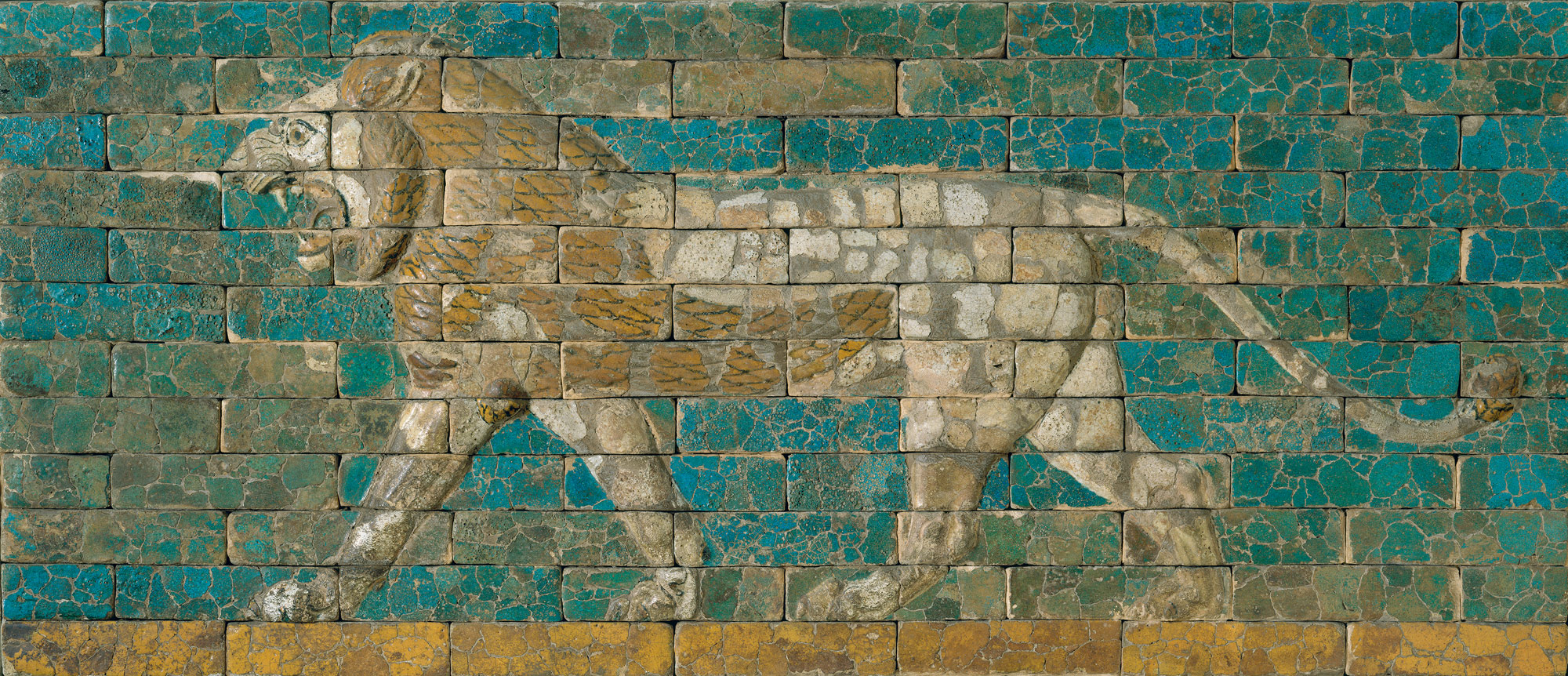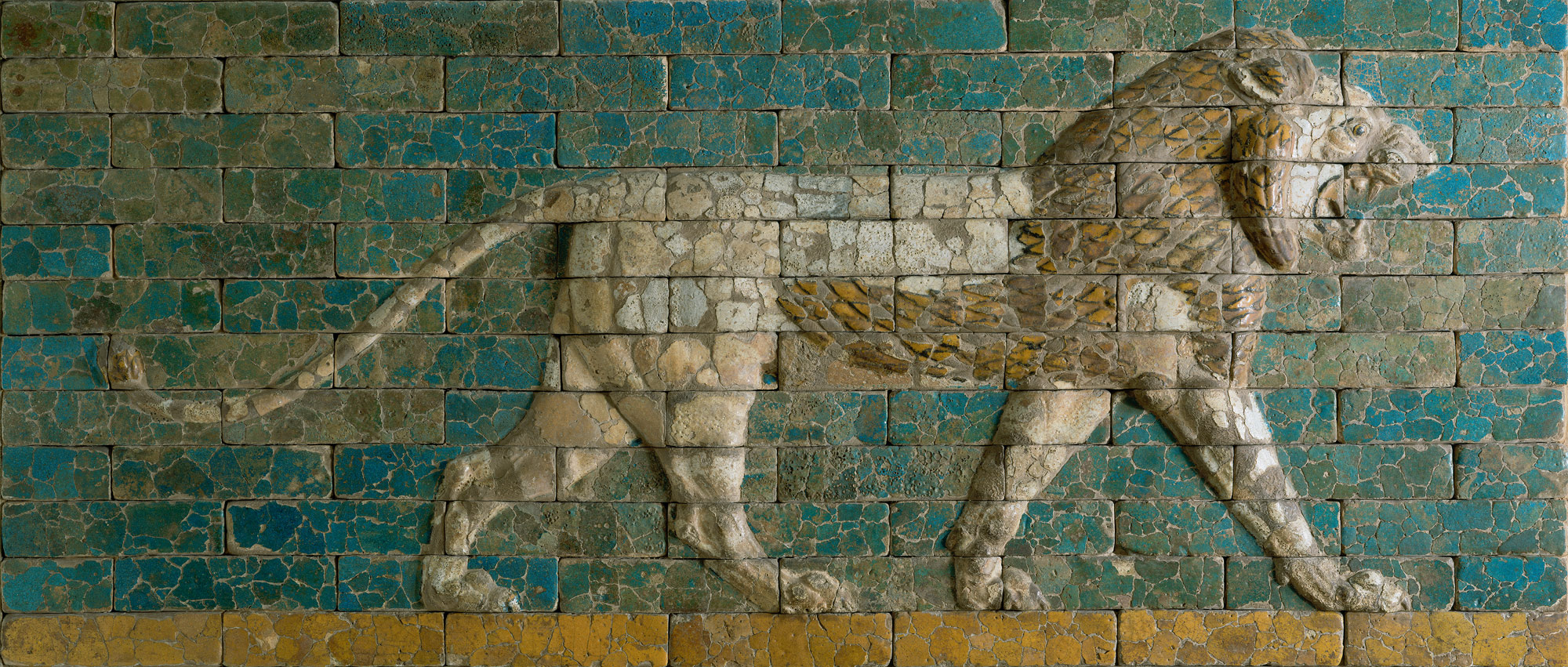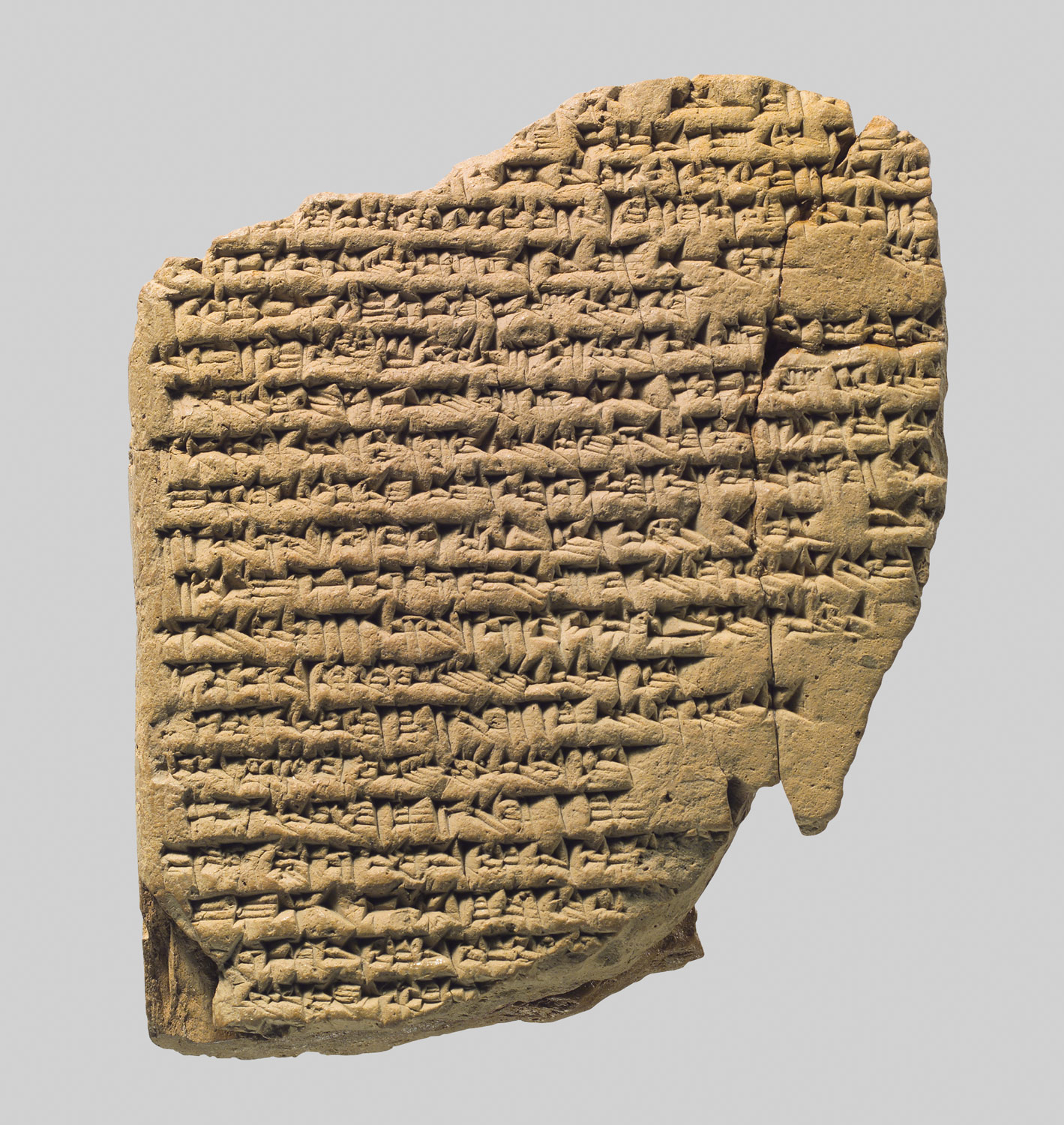This period is characterized by an age of empires. From northern Mesopotamia, the Assyrians renew their military campaigns over an ever-wider region. Their armies defeat cities as far west as the Mediterranean Sea and Egypt and carry back to Assyria vast quantities of booty and tribute. By installing Assyrian governors in conquered capitals, and through the mass deportation of defeated populations, they create a unified empire. The Assyrian empire falls in 612 B.C. to the combined forces of the Babylonians and the Iranian Medes. The Babylonians dominate Mesopotamia until 539 B.C., when Cyrus the Great of Persia, who has already overthrown the Medes, incorporates it into his rapidly growing empire. Under his Achaemenid successors, the Persian empire stretches from India and Central Asia to Egypt and Greece. After more than 200 years, the Persian empire is seized in 331 B.C. by Alexander of Macedon. Following Alexander’s death, his generals divide the empire, with the region from Syria to India falling to Seleucus. By the end of the first century B.C., the Seleucid empire ceases to exist: Mesopotamia is in the hands of the Iranian Parthian empire while northern Syria faces the advance of the Romans.
Mesopotamia, 1000 B.C.–1 A.D.
Timeline
1000 B.C.
750 B.C.
750 B.C.
500 B.C.
500 B.C.
250 B.C.
250 B.C.
1 A.D.
Overview
Key Events
-
879 B.C.
Ashurnasirpal II (r. 883–859 B.C.) moves the Assyrian capital from Ashur to Nimrud (ancient Kalhu, biblical Calah). Lamassu, colossal stone reliefs of human-headed winged lions and bulls, protect the palace entrances (32.143.2).The interior walls are decorated with enormous alabaster slabs carved in low relief with painted details (32.143.4). These show the king hunting, engaged in ritual activities, and defeating his enemies. A cuneiform inscription, incised across the panel, gives the king’s titles and enumerates his achievements. When the construction of the palace is complete, Ashurnasirpal throws a weeklong party to which he invites nearly 70,000 guests. Over the following centuries, vast quantities of luxurious goods, often embellished with carved ivory in local, Syrian, and Phoenician styles, accumulate in the palace, much of it as booty or tribute.
-
ca. 722/721–705 B.C.
Sargon II initiates his reign with the deportation of the population of Samaria, the capital of Israel. His new capital at Khorsabad (ancient Dur Sharrukin) takes seven years to build and is decorated in a manner similar to Nimrud. The use of an alphabetic script to write the Aramaic language on leather or papyrus spreads throughout the Assyrian empire, as do stamp seals, which begin to replace cylinder seals.
-
ca. 704–681 B.C.
Sargon II is killed while campaigning in Anatolia, and is succeeded by his son Sennacherib, who rebuilds the ancient site of Nineveh as his new capital. Within the city, whose walls extend some eight miles, he constructs his “Palace without Rival.” The full height of the stone reliefs decorating the palace walls depict Sennacherib’s military campaigns and building activities.
-
604–562 B.C.
Nebuchadnezzar II rules the Neo-Babylonian empire, and Babylon is rebuilt on a grand scale. Molded multicolored glazed bricks with images of striding lions (31.13.2) decorate the main processional street, while bulls and dragons similarly embellish the city gate named for the goddess Ishtar. In 587/586 B.C., the Babylonian army sacks Jerusalem, destroying the Temple. Much of the population is forcibly deported to Babylon.
-
ca. 550–330 B.C.
The Achaemenid Persian empire dominates the Near East. Because of its great size, a wide variety of styles and art forms exist throughout the empire. Nonetheless, elements are drawn together from various eastern and western cultures to create an artistic style that is distinctly Achaemenid. An innovation of the period is the introduction of western-style metal finger rings, which begin to replace both stamp and cylinder seals.
-
331–138 B.C.
The armies of Alexander of Macedon defeat the Persians. Upon Alexander’s death in Babylon in 323 B.C., his successors divide the empire. Syria, Mesopotamia, and Iran fall under the rule of Seleucus, who founds the Seleucid dynasty. The empire is governed from two capitals, Antioch in Syria and Seleucia in southern Mesopotamia. These and other newly established cities are laid out after the Greek style and are largely populated by Macedonian and Greek colonists. Hellenistic art and culture emerge from a fusion of the various Near Eastern and classical Greek traditions. Under Mithridates I (r. ca. 171–138 B.C.), the Parthians from Iran seize Mesopotamia from Seleucid control and establish their capital on the Tigris at Ctesiphon, across the river from Seleucia.
-
ca. 139 B.C.–1 A.D.
Under the Parthians, Mesopotamia is now the nexus of the Silk Road and Spice Route linking China in the east with Rome in the west. In 53 B.C., the Roman legions under Crassus suffer a decisive defeat at the hands of the Parthians, at Harran (ancient Carrhae) in northern Mesopotamia. A hallmark of the Parthians in Mesopotamia is blue-green glazed pottery.
Citation
“Mesopotamia, 1000 B.C.–1 A.D.” In Heilbrunn Timeline of Art History. New York: The Metropolitan Museum of Art, 2000–. http://www.metmuseum.org/toah/ht/?period=04®ion=wam (October 2000)
Related
Map

Primary Chronology
Secondary Chronology
Lists of Rulers
See also
Keywords
- Achaemenid Empire
- Anatolia and the Caucasus
- Ancient Near Eastern Art
- Arabian Peninsula
- Assyrian Art
- Babylonian Art
- Central and North Asia
- Eastern Mediterranean
- Hellenistic Period
- Iran
- Iraq
- Mesopotamian Art
- Parthian Art
- Persian Art
- Seleucid Art
- Syria
- West Asia
- 10th Century B.C.
- 9th Century B.C.
- 8th Century B.C.
- 7th Century B.C.
- 6th Century B.C.
- 5th Century B.C.
- 4th Century B.C.
- 3rd Century B.C.
- 2nd Century B.C.
- 1st Century B.C.
